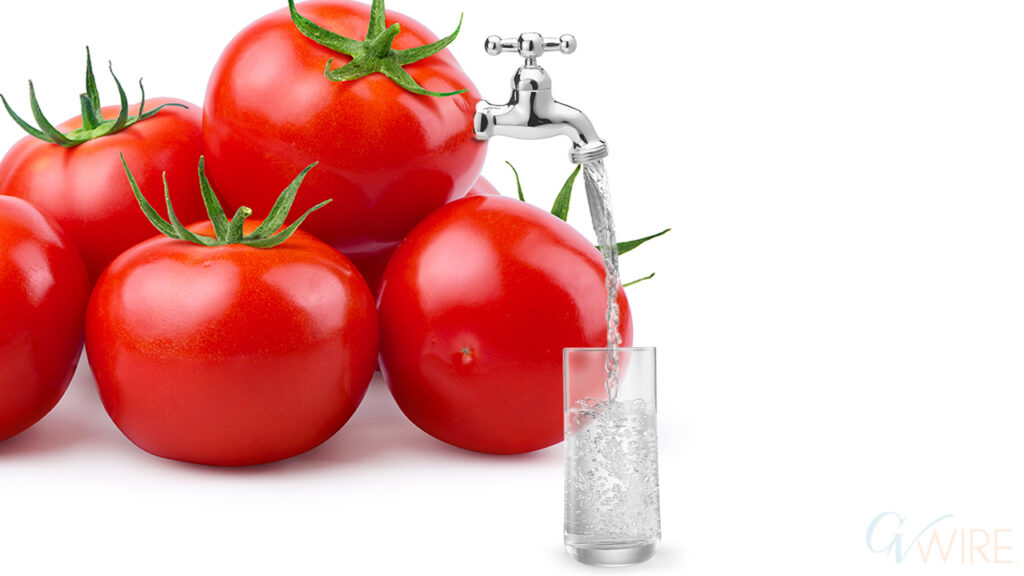The U.S. economy grew at a robust 2.8% annual rate in Q2, driven by consumer spending and business investment despite high interest rates. (AP File)

- The GDP report showed inflation easing but still above the Fed's 2% target, with core PCE inflation at 2.9% last quarter.
- Fed officials are prepared to start cutting interest rates soon, likely in September, as inflation edges toward their target.
- The economy's resilience has seized Americans' attention amid the presidential campaign, with prices still above pre-pandemic levels.
Share
|
Getting your Trinity Audio player ready...
|
WASHINGTON — The nation’s economy accelerated last quarter at a strong 2.8% annual pace, with consumers and businesses helping drive growth despite the pressure of continually high interest rates.
Thursday’s report from the Commerce Department said the gross domestic product — the economy’s total output of goods and services — picked up in the April-June quarter after growing at a 1.4% pace in the January-March period. Economists had expected a weaker 1.9% annual pace of growth.
The GDP report also showed that inflation continues to ease, while still remaining above the Federal Reserve’s 2% target. The central bank’s favored inflation gauge rose at a 2.6% annual rate last quarter, down from 3.4% in the first quarter of the year. Excluding volatile food and energy prices, so-called core PCE inflation increased at a 2.9% pace. That was down from 3.7% from January through March.
The latest figures should reinforce confidence that the U.S. economy is on the verge of achieving a rare “soft landing,” whereby high interest rates, engineered by the Fed, tame inflation without tipping the economy into a recession.
Related Story: Inflation Hits California Families Hardest. It’s Shaping Their Views on the ...
Consumer Spending and Business Investment Boost Growth
Helping boost last quarter’s expansion was consumer spending, the heart of the U.S. economy. It rose at a 2.3% annual rate in the April-June quarter, up from a 1.5% pace in the January-March period. Spending on goods, such as cars and appliances, increased at a 2.5% rate after falling at a 2.3% pace in the first three months of the year.
Business investment was up last quarter, led by a 11.6% annual increase in equipment investment. Growth also picked up because businesses increased their inventories. On the other hand, a surge in imports, which are subtracted from GDP, shaved about 0.9 percentage point from the April-June growth.
Related Story: Stock Market Today: A Wipeout on Wall Street Sends the S&P 500 Down by ...
Fed Poised to Cut Interest Rates
Fed officials have made clear that with inflation edging toward their 2% target level, they’re prepared to start cutting interest rates soon, something they’re widely expected to do in September.
“The Fed will be reassured” by Thursday’s GDP report, said Bill Adams, chief economist at Comerica Bank. “With inflation trending lower … the Fed thinks that it’s getting close to the time to cut interest rates.”
Rate reductions by the Fed would, over time, reduce consumers’ borrowing costs for things like mortgages, auto loans and credit cards.
Economy Seizes Americans’ Attention Amid Presidential Campaign
The state of the economy has seized Americans’ attention as the presidential campaign has intensified. Though inflation has slowed sharply, to 3% from 9.1% in 2022, prices remain well above their pre-pandemic levels.
This year’s economic slowdown reflects, in large part, the much higher borrowing rates for home and auto loans, credit cards and many business loans resulting from the Fed’s aggressive series of interest rate hikes.
The Fed’s rate hikes — 11 of them in 2022 and 2023 — were a response to the flare-up in inflation that began in the spring of 2021 as the economy rebounded with unexpected speed from the COVID-19 recession, causing severe supply shortages. Russia’s invasion of Ukraine in February 2022 made things worse by inflating prices for the energy and grains the world depends on. Prices spiked across the country and the world.
Related Story: Is Inflation Finally Corralled? Powell Says Federal Reserve Believes It’s ...
Economists had long predicted that the higher borrowing costs would tip the United States into recession. Yet the economy kept chugging along. Consumers, whose spending accounts for roughly 70% of GDP, kept buying things, emboldened by a strong job market and savings they had built up during the COVID-19 lockdowns.
The slowdown at the start of this year was caused largely by two factors, each of which can vary sharply from quarter to quarter: A surge in imports and a drop in business inventories. Neither trend revealed much about the economy’s underlying health.



















